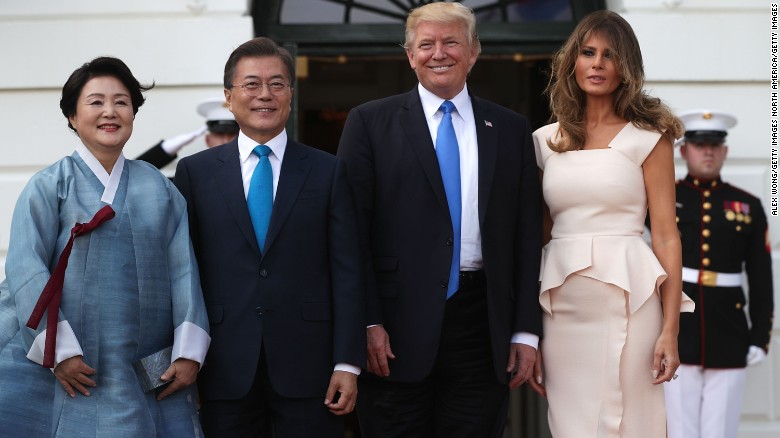GUEST CONTRIBUTOR SPENCER H. KIM WRITES — I was in Washington, DC last week during President Moon Jae-in’s recent visit. I had the good luck to be invited to two of his dinner events, one before the summit with President Donald Trump and one after.
My impression, both from seeing things myself and talking to a host of government officials, businessmen and media types ― both Korean and American ― is that President Moon’s trip was a large success, both because it was well planned and because he had a bit of good luck as well.
Prior to the visit, the American media was full of predictions that the two presidents would clash, on THAAD, on North Korea and on trade. The pundits in the US who focus on Korea and Asia, especially, were consumed by the idea that THAAD was some kind of big test for Moon and the alliance. They worried that the personalities of the two presidents would prevent a good personal rapport.
In fact, those things did not happen. Moon and his team, especially Foreign Minister Kang Kyung-wha, defanged the THAAD issue by emphasizing directly to US government officials the rationale behind the need for an environmental review and the assurance that THAAD was an alliance endeavor and would be jointly carried out. The American pundits continued to chatter in the media, but the US government understood Moon’s position and THAAD wasn’t an issue.
On North Korea, Moon’s team also explained his vision – and President Moon himself gave an excellent explanation of that vision at the Chamber of Commerce dinner the day before the summit started. Before and during the visit he also explained the ROK’s steadfast support of sanctions but his audiences also understood his logic that sanctions are but a tool of diplomacy and the door to dialogue had to be left open.
The Joint Statement following the summit made this view part of the two countries’ joint strategy. The Statement also included a mechanism, a regularized 2+2 ministerial level meetings as well as a high-level “Extended Deterrence Strategy and Consultation Group,” to make sure US-ROK policy will be coordinated. This should assure that the two countries don’t go off in different directions. And Korea’s lead role in fostering an environment for the peaceful unification of the Korean Peninsula, as well as in engagement on humanitarian issues, was highlighted in the Joint Statement.
How good this result was, compared to the dark predictions I’d read in so many American publications cannot be overstated.
On trade, President Moon led a large contingent of Korean businessmen and engaged with US business at the Chamber of Commerce dinner and elsewhere. Although President Trump brought up trade in the public portions of the summit ― US trade deficits being one of his signature campaign issues ― the Korean side was generally able to get the point across that Korean-American economic relations are deep, wide and rich, and so, while they may need some updating and tidying up, there is no need to take drastic measures.
President Moon was also lucky on the trip. Washington was an extremely busy place in the days and weeks leading up to the visit. Attention, and news coverage, was taken up in drama over a health bill, over a tax bill, by the visit a few days before Moon of Indian Prime Minister Narendra Modi, a huge Republican Party fund-raising dinner for President Trump’s re-election committee, etc. Therefore, the pundits’ predictions of gloom for the visit never really burned through to the Washington elite, while the Moon team’s targeted messages to key ears did.
This phenomena was apparent in President Moon’s meeting with US congressional leaders. From what I could see, they were not really briefed on the particulars of the issues between the US and Korea ― being distracted by so many other things. Instead, what was obvious was the good will they felt toward Korea in general. South Korea is an ally, they are the “good guys” vs. North Korea; there is a big economic connection. The American legislators seemed genuinely happy to meet the new president of Korea and President Moon responded by making a good impression on them.
I have read the Joint Statement released after the summit several times. I suggest everyone interested in Korean-American relations read it. And certainly, before writing any articles of gloom about US-ROK relations, journalists and pundits should read it. I am impressed that the Moon administration and the Trump administration are much more coordinated after the summit than most people thought possible going into it.
Spencer H. Kim is CEO of CBOL Corp., a California aerospace firm. He is a member of the Council on Foreign Relations, a co-founder of the Pacific Century Institute (PCI) and was a fellow at Harvard’s Ash Center for Democratic Governance and Innovation 2012-2013. PCI is an alliance partner of Asia Media International.

